
.webp)
Do you ever experience pain or tingling in your hands and fingers? It could be carpal tunnel syndrome, a common condition that affects many people who use their hands and wrists frequently. Carpal tunnel syndrome is caused by the compression of the median nerve in the wrist, which can lead to discomfort, numbness, and weakness in the hand and fingers.
Fortunately, yoga can offer a natural and effective way to manage carpal tunnel syndrome symptoms. In this article, we'll explore some yoga poses and practices that can help relieve pain and improve flexibility in the wrists and hands.
Yoga has many benefits for overall health and wellness, and it can be particularly helpful for managing carpal tunnel syndrome symptoms. Here are just a few of the benefits:
Reducing pain: Certain yoga poses can help stretch and strengthen the muscles in the wrist and hand, which can reduce pain and discomfort.
Improving flexibility: Tight muscles and tendons in the wrist and hand can exacerbate carpal tunnel syndrome symptoms, but yoga can help improve flexibility and mobility.
Reducing stress: Stress and tension in the body can contribute to carpal tunnel syndrome symptoms, but yoga can help reduce stress levels and promote relaxation.
[inline-CTA-1]
Yoga poses, or asanas, can be a powerful tool for managing carpal tunnel syndrome symptoms. Here are a few poses to try:
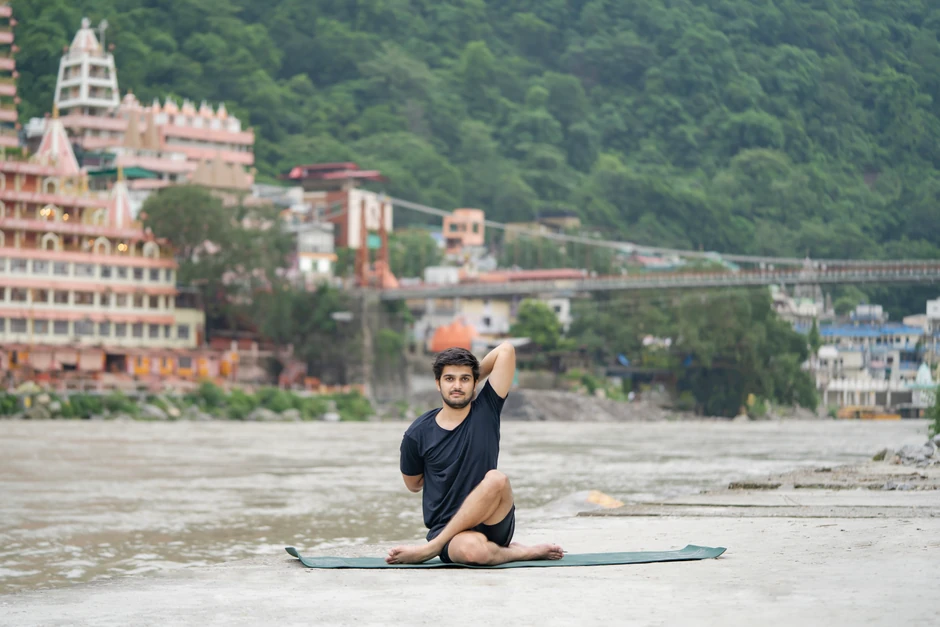
This pose can help stretch the wrists and forearms, reducing pain and stiffness. To perform this pose, sit on the floor with your legs extended in front of you. Bend your right knee and place your right foot on the floor, outside your left thigh. Bring your left heel toward your right buttock. Cross your left arm over your right arm and bring your palms together. Hold for 5-10 breaths, then switch sides.

This pose can help stretch the muscles in the hands, wrists, and arms, improving flexibility and reducing pain. Start on your hands and knees, with your wrists directly under your shoulders and your knees directly under your hips. Lift your hips up and back, straightening your arms and legs. Press your hands into the floor and lengthen through your spine. Hold for 5-10 breaths.
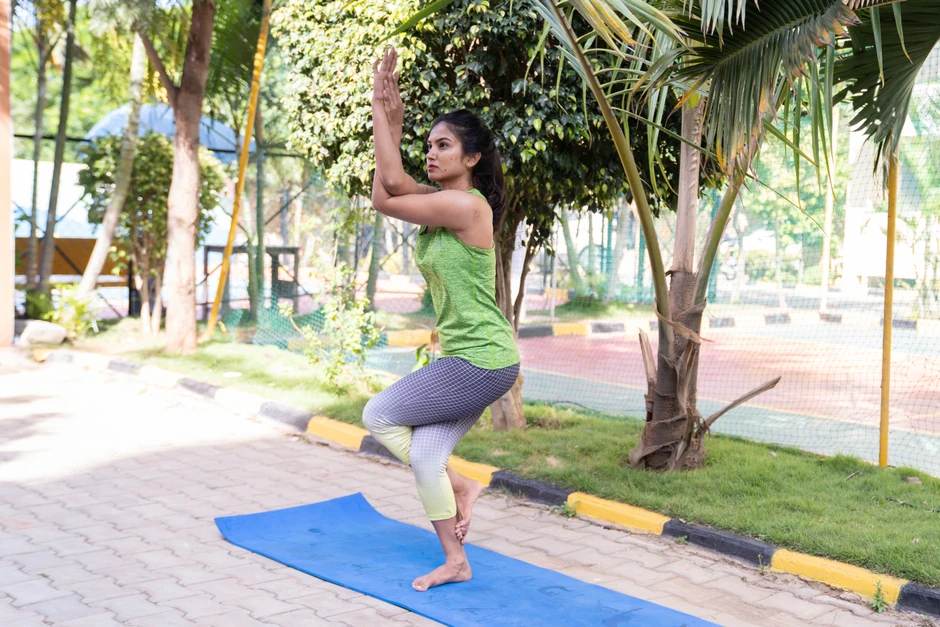
This pose can help strengthen the muscles in the hands and wrists, which can improve grip strength and reduce pain. To perform this pose, stand with your feet hip-width apart and your arms at your sides. Bring your right arm under your left arm, and bend both elbows to bring your palms together. Cross your right thigh over your left thigh. Balance on your left foot and hold for 5-10 breaths, then switch sides.
This pose can help stretch the wrists and forearms, promoting flexibility and reducing pain. To perform this pose, stand with your feet about 3-4 feet apart. Turn your right foot out 90 degrees and your left foot in slightly. Reach your right arm forward and hinge at your hip to reach your right hand toward your right shin or the floor. Extend your left arm straight up toward the ceiling. Hold for 5-10 breaths, then switch sides.
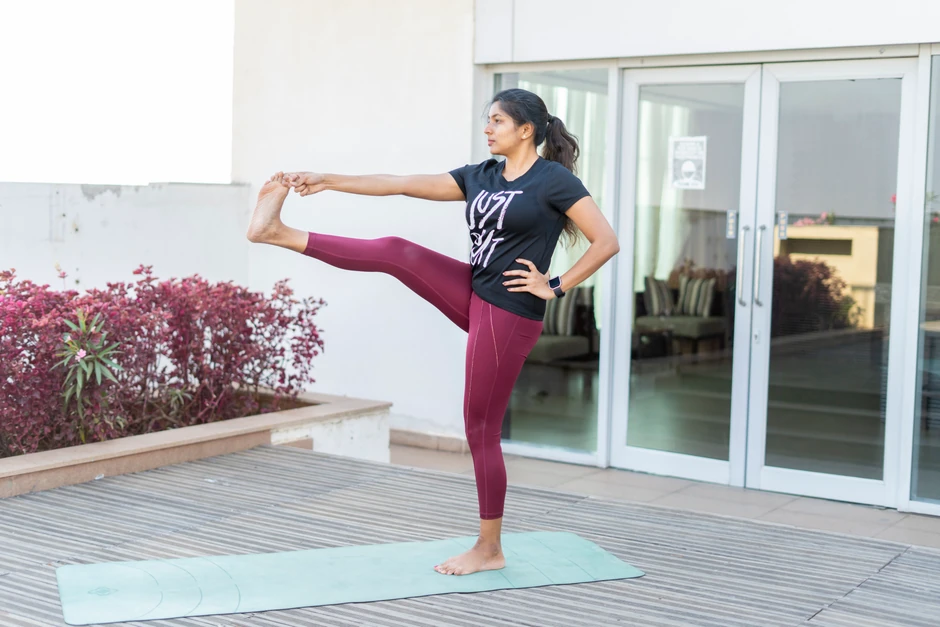
This pose can help stretch the muscles in the hands, wrists, and arms, improving flexibility and reducing pain. To perform this pose, stand with your feet hip-width apart. Inhale and lift your arms up overhead. Exhale and fold forward, reaching for your big toes with your hands. Hold for 5-10 breaths.
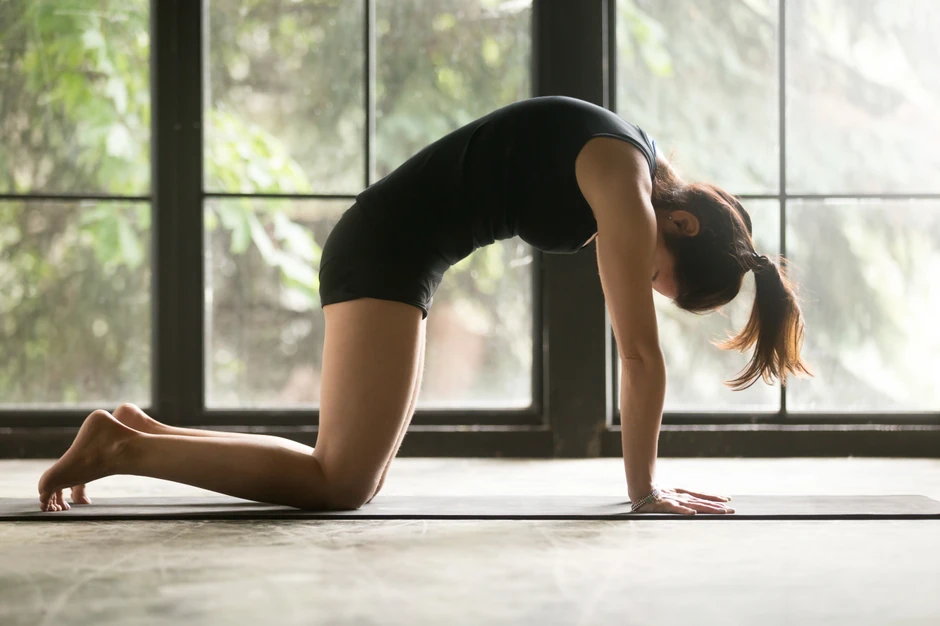
This pose can help stretch and mobilize the wrists, reducing stiffness and promoting flexibility. To perform this pose, start on your hands and knees, with your wrists directly under your shoulders and your knees directly under your hips. Inhale and arch your back, lifting your tailbone and dropping your belly. Exhale and round your spine, tucking your chin to your chest. Repeat for several breaths.
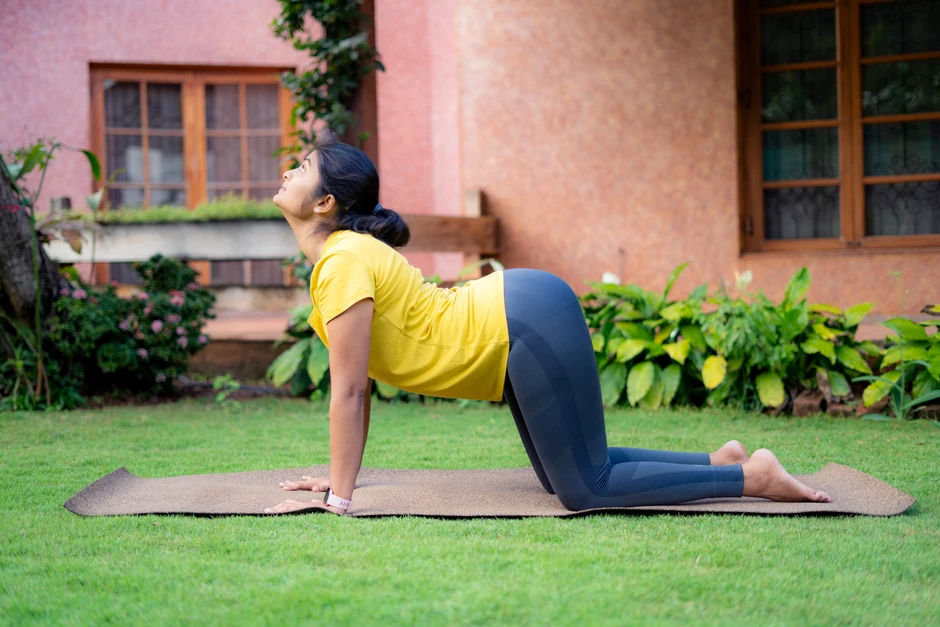
This pose can help stretch and mobilize the wrists, reducing stiffness and promoting flexibility. To perform this pose, start on your hands and knees, with your wrists directly under your shoulders and your knees directly under your hips. Inhale and arch your back, lifting your tailbone and dropping your belly. Hold for a breath or two, then return to neutral spine.
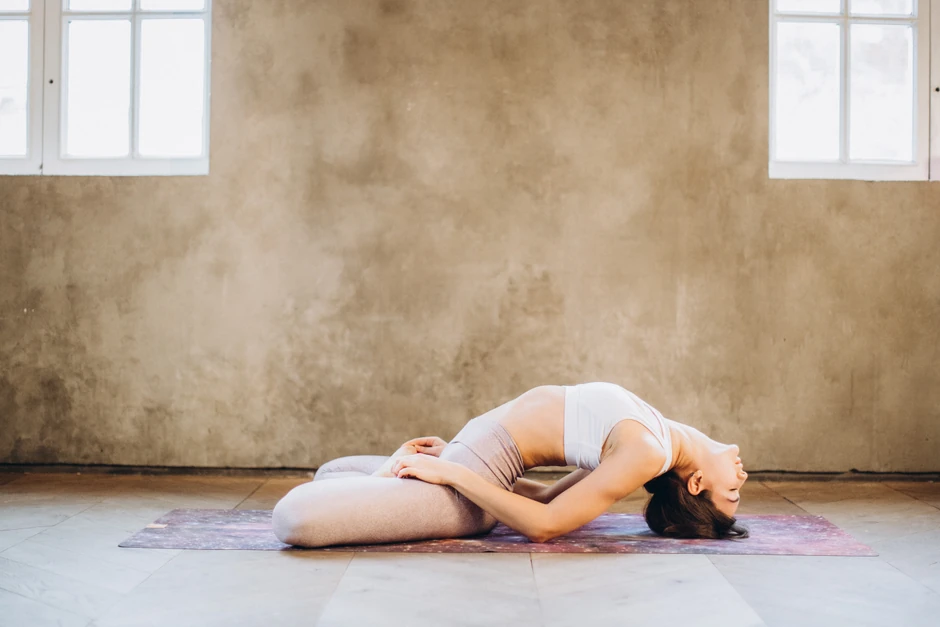
This pose can help stretch the chest and shoulders, relieving tension in the upper body and reducing carpal tunnel syndrome symptoms. To perform this pose, lie on your back with your knees bent and your feet flat on the floor. Lift your hips and slide your hands, palms down, under your buttocks. Press your forearms and elbows into the floor and lift your chest. Hold for 5-10 breaths.
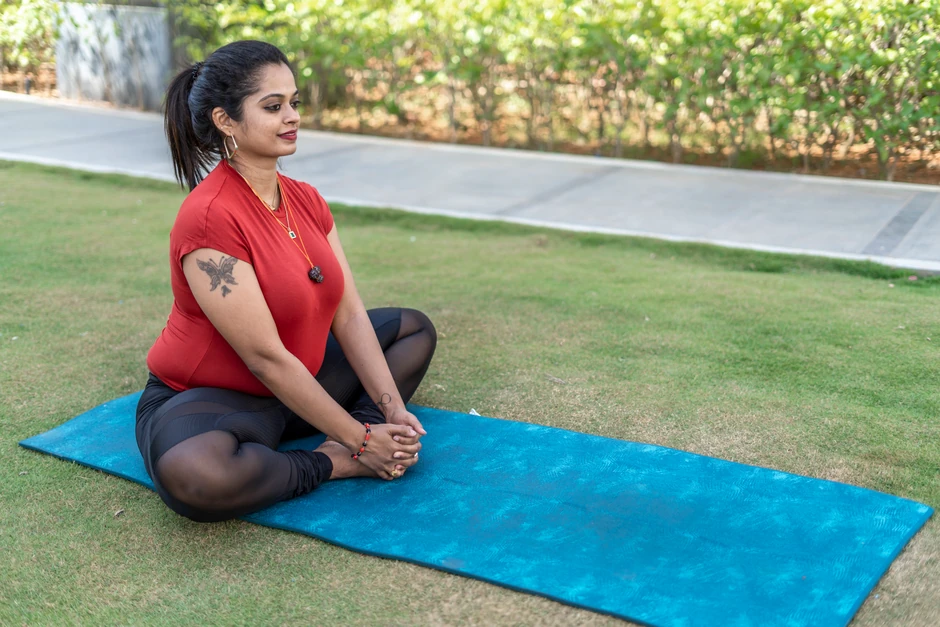
This pose can help stretch the inner thighs, hips, and groin, which can alleviate pressure on the wrists and hands. To perform this pose, sit on the floor with the soles of your feet together and your knees bent out to the sides. Hold your ankles or feet with your hands and gently press your knees down toward the floor. Hold for 5-10 breaths.

This pose can help stretch the muscles in the hands, wrists, and arms, reducing stiffness and promoting flexibility. To perform this pose, stand with your feet hip-width apart. Inhale and lift your arms up overhead. Exhale and fold forward, reaching for the floor with your hands. Hold for 5-10 breaths. If you have difficulty reaching the floor, you can place your hands on blocks or a chair seat.
[inline-CTA-2]
In addition to yoga poses, breathing exercises and meditation can be helpful for managing carpal tunnel syndrome symptoms. Here are a few practices to try:
Deep Breathing: Taking slow, deep breaths can help reduce stress and tension in the body, which can contribute to carpal tunnel syndrome symptoms.
Guided Meditation: Guided meditations can help promote relaxation and reduce stress, which can in turn reduce carpal tunnel syndrome symptoms.
Visualization: Visualizing the body healing and repairing itself can help reduce pain and promote healing in the wrists and hands.
When practicing yoga with carpal tunnel syndrome, it's important to listen to your body and modify your practice as needed. Here are a few tips to keep in mind:
Use Props: Props like blocks or straps can help make poses more accessible and comfortable.
Modify Poses: If a pose is too painful or uncomfortable, modify it or skip it altogether.
Be Mindful: Pay attention to your body and how it feels during your practice. If a certain pose or practice is causing pain or discomfort, stop and modify or skip it.
Managing carpal tunnel syndrome symptoms can be a challenge, but incorporating yoga into your routine can be a natural and effective way to find relief. By practicing yoga poses, breathing exercises, and meditation regularly, you can improve flexibility, reduce pain, and promote relaxation in your wrists and hands. Give it a try and see how yoga can benefit your carpal tunnel syndrome symptoms today!
Yoga is a great way to manage carpal tunnel syndrome symptoms! Certain yoga poses can help stretch and strengthen the muscles in the wrists, hands, and arms, which can relieve pressure on the median nerve and reduce symptoms like pain, numbness, and tingling. Plus, practicing yoga can help reduce inflammation, increase flexibility, and improve circulation in the affected area.
If you have carpal tunnel syndrome, it's important to avoid yoga poses that put too much pressure on the wrists or require excessive bending or flexing of the hands. Poses like Chaturanga Dandasana (Four-Limbed Staff Pose), Adho Mukha Svanasana (Downward-Facing Dog Pose), and Plank Pose can worsen carpal tunnel symptoms and should be avoided. Instead, focus on poses that gently stretch and strengthen the wrists and hands.
In addition to practicing yoga, there are several other best practices for managing carpal tunnel syndrome. These include taking frequent breaks from repetitive tasks that strain the wrists and hands, using ergonomic tools and equipment to reduce strain, maintaining good posture, and engaging in regular exercise and stretching to promote overall health and flexibility. It's important to take care of yourself both on and off the mat!
There are several steps you can take to protect yourself from developing carpal tunnel syndrome. Using ergonomic tools and equipment, taking frequent breaks from repetitive tasks, and maintaining good posture can all help reduce your risk. Engaging in regular exercise and stretching can also help keep your hands and wrists healthy and flexible. Remember to listen to your body and take action if you notice any symptoms of carpal tunnel syndrome, such as pain, numbness, or tingling in the hands or wrists. A healthcare provider can help diagnose and treat any issues before they become more serious.

Receive personalized guidance tailored to your unique fitness goals, live with a dedicated coach—no credit card required.